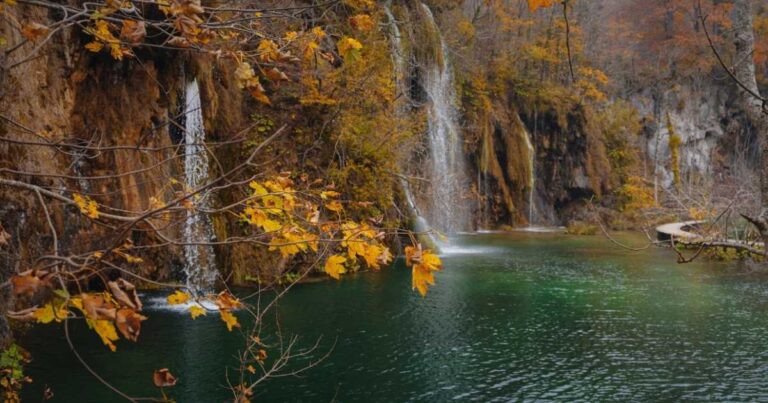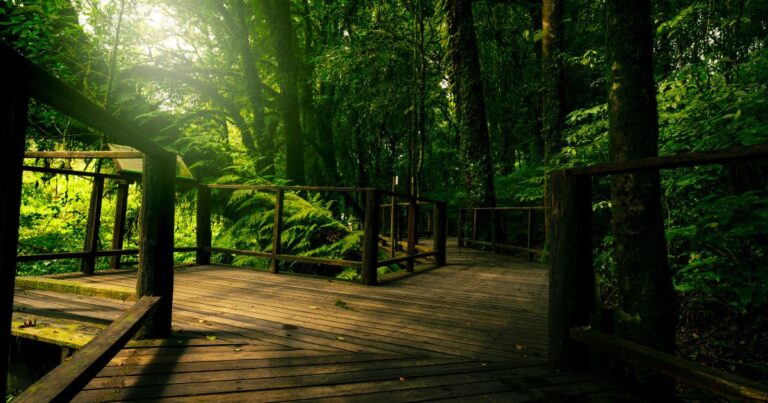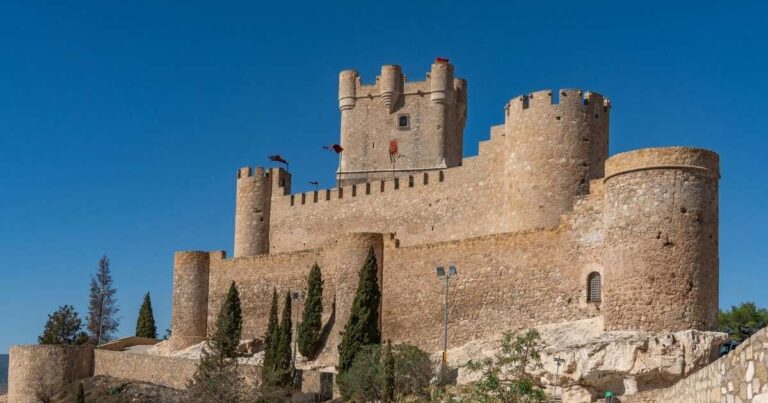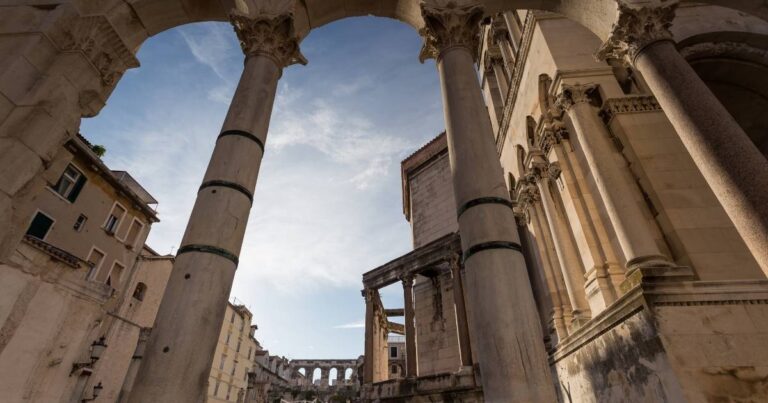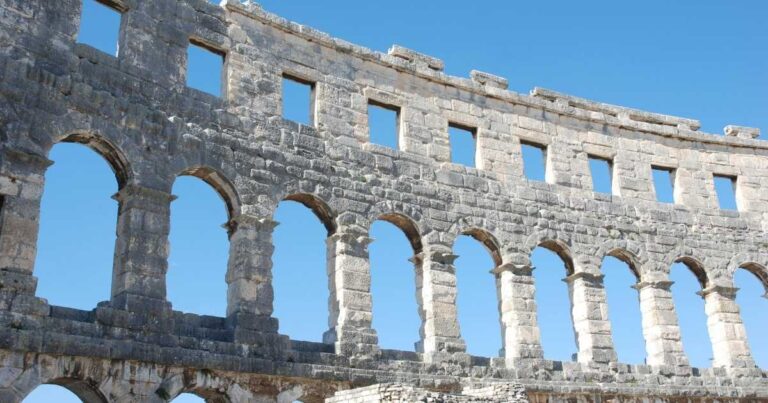Embark on an unforgettable adventure as we delve into the heart of one of Europe’s most breathtaking natural wonders. This guide is your passport to discovering the enchanting Plitvice Lakes National Park, a jewel nestled within Croatia. Prepare to be captivated by cascading waterfalls, turquoise waters, and lush landscapes that define this UNESCO World Heritage Site.
Introduction to Croatia and Its National Parks
Overview of Croatia as a Travel Destination
Croatia, with its stunning coastline along the Adriatic Sea, is a premier travel destination boasting a rich history and diverse landscapes. The country’s cities are particularly appealing, offering a compelling blend of culture and adventure. Among them are:
- The vibrant city of Zagreb
- The historic walls of Dubrovnik
- The ancient charm of Zadar
The allure of the Adriatic attracts countless travelers seeking sun-soaked beaches and unforgettable experiences.
Importance of National Parks in Croatia
National Parks in Croatia are vital for preserving the country’s unique natural beauty and biodiversity. These protected areas safeguard diverse ecosystems, and many offer incredible opportunities for recreation and education. For instance, several prominent examples include:
- Krka National Park
- Risnjak National Park
- Paklenica National Park
These parks enrich the travel experience for all who visit and help conserve precious habitats.
Highlighting Plitvice Lakes National Park
Plitvice Lakes National Park stands out as Croatia‘s most iconic national park, a UNESCO World Heritage jewel renowned for its sixteen interconnected terraced lakes. The park features a series of stunning cascades and 90 waterfalls, carving through a landscape of lush forests and vibrant meadows. Visiting Plitvice Lakes offers an unparalleled opportunity to witness nature’s artistry at its finest, making it a must-see on any trip to Croatia.
Discovering Plitvice Lakes National Park
History and Significance of Plitvice Lakes
The history of Plitvice Lakes National Park is intertwined with its geological formation and ecological importance. Recognized early on for its exceptional beauty, it became a national park in 1949. In 1979, Plitvice Lakes National Park was declared a UNESCO World Heritage Site, underscoring its global significance and need for preservation, attracting numerous visitors keen to explore its picturesque landscapes and unique ecosystem.
Unique Features of the Park
Plitvice Lakes‘ unique features include its distinct upper lakes and lower lakes sections. These lakes are connected by spectacular cascades and waterfalls, all formed by the deposition of travertine. The vibrant turquoise waters contrast beautifully with the surrounding greenery, creating a scene that is both surreal and captivating, offering a visual feast for every traveler.
Wildlife and Flora in Plitvice Lakes
The diverse ecosystem of Plitvice Lakes National Park supports a rich array of wildlife and flora. Specifically, the park is home to a variety of animals, including:
- Brown bears
- Wolves
- Numerous bird species
Lush forests of beech, fir, and spruce cover the landscape, creating a haven of tranquility and a testament to the untouched natural beauty of this park in Croatia.
Getting to Plitvice Lakes National Park
Traveling from Zagreb
Embarking on a trip to Croatia to visit Plitvice Lakes National Park from Zagreb is a straightforward and scenic journey. The most common method is by bus, with frequent departures from Zagreb‘s main bus station. The bus travel takes approximately 2 to 3 hours, offering picturesque views of the Croatian countryside along the way, allowing travelers to relax and anticipate the natural beauty that awaits them at the national park.
Access from Other Major Cities: Dubrovnik and Zadar
Accessing Plitvice Lakes National Park from other major Croatian cities like Dubrovnik and Zadar requires a bit more planning, but it’s entirely feasible. From Dubrovnik, the journey is longer, often involving a domestic flight to Zagreb or Zadar followed by a bus ride to the national park. From Zadar, the bus travel is shorter, taking around 2 hours, providing easy access to the stunning cascades and turquoise waters of Plitvice Lakes.
Public Transport and Car Rentals
When planning your visit to Plitvice Lakes National Park, you have the option of public transport or car rentals. Public transport includes buses that run regularly from major Croatian cities, providing an affordable and convenient way to reach the national park. Alternatively, renting a car offers greater flexibility to explore at your own pace, allowing you to discover other nearby attractions along the way, enhancing your travel experience in Croatia.
Best Times to Visit Plitvice Lakes National Park
Understanding the Off-Season Benefits
Visiting Plitvice Lakes National Park during the off-season, particularly in the winter months, offers several unique advantages. The crowds are significantly smaller, allowing for a more intimate and peaceful experience of the natural beauty. The national park in winter transforms into a serene wonderland, with waterfalls partially frozen and landscapes draped in snow, presenting a magical travel opportunity for those seeking tranquility and stunning picturesque views in Croatia.
Peak Season Attractions and Challenges
The peak season at Plitvice Lakes National Park brings vibrant attractions but also its share of challenges. During the summer, the weather is ideal for exploring the upper lakes and lower lakes, and the lush greenery is at its most vibrant. However, this period also sees a surge in travelers, leading to crowded trails and longer wait times. Planning your itinerary carefully and arriving early can help mitigate these challenges and allow you to enjoy the cascades.
Seasonal Changes in Landscape and Wildlife
The seasonal changes dramatically transform the landscape and wildlife within Plitvice Lakes National Park. In spring, the meadows burst into bloom, and the waterfalls are at their fullest, fed by melting snow. Autumn brings a spectacular display of fall foliage, with vibrant colors painting the forests. These seasonal shifts not only enhance the natural beauty but also influence the activity of the park’s diverse wildlife, making each visit a unique travel experience in Croatia.
Activities and Attractions in Plitvice Lakes
Hiking Trails and Routes
Exploring Plitvice Lakes National Park via its numerous hiking trails is an immersive experience. The trails are well-maintained and cater to various fitness levels, allowing every traveler to find a suitable route. These paths wind around the upper lakes and lower lakes, offering breathtaking views of the cascades and turquoise waters. Following a detailed itinerary ensures you cover the most scenic spots, providing ample opportunities to witness the natural beauty of this UNESCO World Heritage Site.
Boat Tours and Scenic Views
Opting for a boat ride on Plitvice Lakes offers a unique perspective of the national park‘s stunning landscapes. These tours glide across the crystal-clear waters, providing unobstructed views of the surrounding forests and waterfalls. The gentle movement of the boat and the serene environment create a relaxing experience, perfect for soaking in the picturesque scenery. Don’t forget your camera to capture the unforgettable views of this Croatian gem, the Plitvice Lakes National Park.
Photography Tips for Stunning Shots
To capture stunning photographs at Plitvice Lakes National Park, consider visiting during the golden hours of sunrise and sunset when the light is soft and warm. Use a polarizing filter to reduce glare on the water and enhance the vibrant colors of the turquoise lakes and lush greenery. Experiment with different angles and compositions to highlight the cascades and natural beauty. Be patient and wait for the perfect moment to capture the essence of this UNESCO World Heritage Site in Croatia.
Exploring Nearby Destinations
Istria: A Taste of Croatia’s Coast
Venture beyond Plitvice Lakes National Park to discover Istria, a captivating region offering a taste of Croatia‘s stunning coastline. Known for its charming towns, rolling hills, and delicious cuisine, Istria provides a delightful contrast to the inland beauty of the national park. Explore historic cities like Rovinj and Pula, indulge in local delicacies such as truffles and seafood, and savor the Adriatic atmosphere that defines this enchanting Croatian destination.
Paklenica National Park: Adventure Awaits
For adventure enthusiasts, Paklenica National Park, located a short distance from Plitvice Lakes National Park, offers a thrilling escape. This rugged landscape is a haven for hikers and rock climbers, with its dramatic canyons and challenging trails. The park’s diverse flora and fauna add to its appeal, providing a unique opportunity to connect with nature. After the tranquility of Plitvice Lakes, Paklenica National Park presents an exhilarating contrast for those seeking an active travel experience in Croatia.
The Islands of Hvar and Korcula
Extend your travel to Croatia to experience the allure of the Adriatic Sea by visiting the islands of Hvar and Korcula. Hvar, known for its vibrant nightlife and luxurious resorts, offers a glamorous escape with stunning beaches and historic sites. Korcula, on the other hand, exudes a more laid-back charm, with its medieval architecture, lush vineyards, and pristine coves. Access to both islands is typically by ferry from major coastal cities, enhancing your Croatian adventure.
Practical Tips for Visiting Plitvice Lakes National Park
What to Pack for Your Trip
When preparing for a trip to Croatia to visit Plitvice Lakes, packing appropriately is essential for a comfortable and enjoyable experience. Sturdy hiking shoes are a must, as you’ll be walking on uneven terrain. Layers of clothing are advisable, as the weather can change quickly. Don’t forget essentials like sunscreen, a hat, and insect repellent to protect yourself from the elements. A refillable water bottle is also important to stay hydrated as you explore the Plitvice Lakes National Park.
Park Regulations and Guidelines
To ensure the preservation of Plitvice Lakes National Park‘s natural beauty, it’s crucial to adhere to the park’s regulations and guidelines. Stay on designated trails to protect the delicate ecosystems and prevent erosion. Swimming is prohibited in the lakes to maintain their pristine condition. Avoid feeding the wildlife, as it can disrupt their natural behaviors. Respect the environment by properly disposing of waste and minimizing your impact on this UNESCO World Heritage Site in Croatia.
Accommodations Near Plitvice Lakes
Finding suitable accommodations near Plitvice Lakes National Park is a key part of planning your visit. Booking in advance is highly recommended, especially during the peak season, to secure the best options. Numerous hotels, guesthouses, and apartments are available in the surrounding villages, catering to various budgets and preferences. Staying nearby allows for easy access to the national park, enabling you to make the most of your time exploring its stunning cascades and turquoise waters on your travel experience.
Conclusion and Final Thoughts
Recap of Key Highlights
In summary, your travel to Croatia would not be complete without a visit to Plitvice Lakes National Park, a UNESCO World Heritage Site renowned for its stunning cascades and turquoise lakes. From the vibrant city of Zagreb to the picturesque trails winding around the upper lakes and lower lakes, the national park offers an unparalleled travel experience, filled with natural beauty and unforgettable moments of this Croatian treasure.
Encouragement to Explore Further
We encourage every traveler to explore beyond the well-trodden paths and discover the hidden gems within Plitvice Lakes National Park. Whether it’s a peaceful boat ride on the lakes or a challenging hiking adventure, allow yourself to be immersed in the serene landscapes. Plan your itinerary to also include nearby gems such as Krka National Park and the Adriatic isles such as Korcula and Hvar.
Frequently Asked Questions (FAQs)
What is the best time to visit Plitvice Lakes National Park?
The best time to visit Plitvice Lakes National Park depends on your preferences. Spring and autumn offer pleasant weather and fewer crowds, showcasing the park’s vibrant colors. Summer is ideal for warm weather activities, but expect more travelers. The off-season in winter months provides a unique, serene experience with snow-draped landscapes and frozen waterfalls, transforming this national park in winter into something magical.
How long should I spend in Plitvice Lakes?
To fully appreciate the natural beauty of Plitvice Lakes, plan to spend at least one full day in the national park. This allows you to explore both the upper lakes and lower lakes, take a boat ride, and hike several trails. If you’re an avid hiking enthusiast or wish to explore the surrounding area, consider extending your stay to two or three days, providing ample time to enjoy the cascades and scenery.
Are there guided tours available in Plitvice Lakes?
Yes, guided tours are available in Plitvice Lakes National Park, offering valuable insights into the park’s history, geology, and ecology. Booking in advance is recommended, especially during peak season, to secure your spot on a guided travel experience. These tours, often led by knowledgeable local guides, enhance your understanding of the UNESCO World Heritage Site and ensure you don’t miss any key features.
What should I wear while visiting the park?
When visiting Plitvice Lakes National Park, comfortable and practical clothing is essential. Wear sturdy hiking shoes suitable for uneven terrain, and dress in layers as the weather can change quickly. A waterproof jacket is advisable, especially during the shoulder seasons. Don’t forget essentials like sunscreen, a hat, and insect repellent to protect yourself from the elements as you explore the national park in Croatia.
Can I visit Plitvice Lakes and other parks in one trip?
Yes, you can certainly combine a visit to Plitvice Lakes National Park with other national parks in Croatia. Consider planning your itinerary to include the Adriatic coastline, where you can explore Istria, Zadar, Dubrovnik, and the islands of Hvar and Korcula, accessible by ferry.



